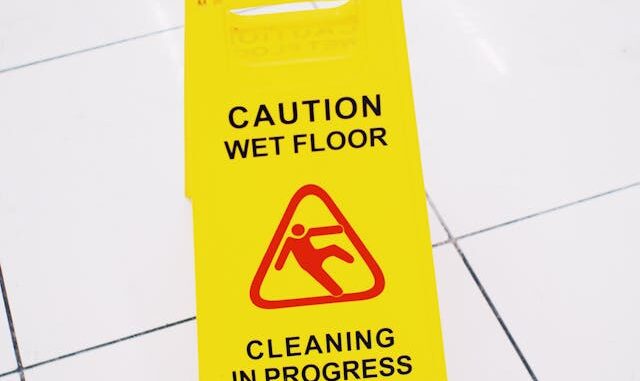
Preventing slip and fall accidents is not only essential for ensuring the safety of visitors and occupants but also for protecting property owners and managers from potential liability. Implementing effective prevention strategies can help minimize the risk of accidents and injuries on their premises. Here are some tips for property owners and managers to consider:
- Regular Inspections: Conducting regular inspections of the property is crucial for identifying and addressing potential hazards. This includes inspecting floors, walkways, staircases, and outdoor areas for any signs of damage, uneven surfaces, or slippery conditions.
- Maintenance and Repairs: Promptly addressing any maintenance issues or repairs can help prevent slip and fall accidents. This may involve fixing cracked sidewalks, repairing loose floorboards, replacing broken handrails, and ensuring that all surfaces are in good condition.
- Slip-Resistant Surfaces: Using slip-resistant materials and treatments on floors can help reduce the risk of slips and falls. For example, installing slip-resistant mats or applying anti-slip coatings can improve traction and prevent accidents, especially in high-traffic areas or areas prone to spills.
- Proper Lighting: Adequate lighting is essential for ensuring that individuals can see potential hazards and navigate their surroundings safely. Property owners should ensure that all indoor and outdoor areas are well-lit, especially in areas such as stairwells, hallways, and parking lots.
- Clear Signage: Providing clear and visible signage is important for alerting visitors to potential hazards and directing them away from dangerous areas. Warning signs should be used to indicate wet floors, uneven surfaces, or other risks, and should be placed prominently to ensure they are easily noticeable.
- Snow and Ice Removal: In cold climates, property owners are responsible for removing snow and ice from sidewalks, parking lots, and other outdoor areas to prevent slip and fall accidents. Regular snow removal and salting or sanding can help maintain safe walking surfaces during winter months.
- Employee Training: Properly training staff members on safety protocols and procedures can help prevent accidents and ensure that hazards are addressed promptly. Employees should be educated on how to identify potential risks, respond to spills or other emergencies, and communicate effectively with visitors.
- Accessibility Considerations: Property owners should also consider accessibility requirements for individuals with mobility impairments or other disabilities. Ensuring that pathways are clear and accessible, installing handrails and ramps where necessary, and providing accommodations as required by law can help prevent accidents and promote inclusivity.
- Liability Insurance: Obtaining adequate liability insurance coverage is essential for protecting property owners and managers from potential lawsuits resulting from slip and fall accidents. Working with an experienced insurance agent to assess risks and secure appropriate coverage can provide peace of mind and financial protection in the event of an accident.
By implementing these prevention strategies, property owners and managers can create safer environments for their visitors and reduce the risk of slip and fall accidents. Taking proactive measures to address potential hazards not only protects individuals from harm but also helps mitigate liability and uphold a commitment to safety and well-being on their premises.
